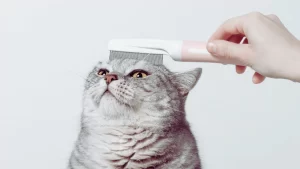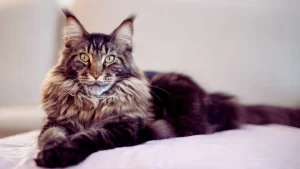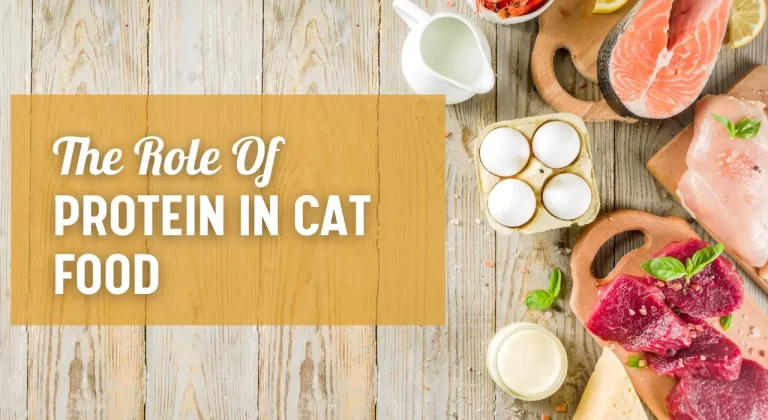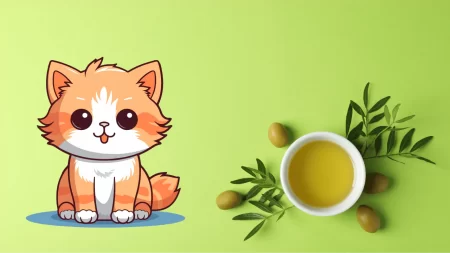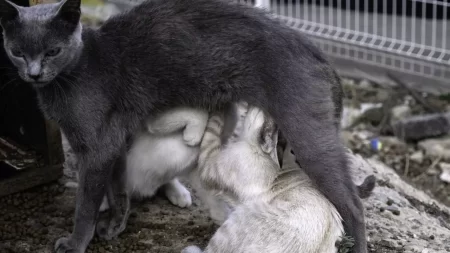Cats need protein to live. They get it from eating meat. Protein helps them grow, stay healthy, and have energy.
This article will tell you why protein matters for cats, how much they need, and what kind of food has good protein.
Understanding the Importance of Protein in a Cat’s Diet
Role of Protein in a Carnivore’s Diet
Cats have evolved to eat a diet that is rich in animal protein and low in carbohydrates. Unlike humans and dogs, cats cannot synthesize some essential amino acids from plant sources and need to obtain them from animal sources. Amino acids are the building blocks of proteins that are used for various bodily functions.
Essential amino acids for cat’s bodies
There are 22 amino acids that cats need, but 11 of them can be synthesized by their own bodies. The remaining 11 are called essential amino acids, which means they must be supplied by the diet. These are arginine, histidine, isoleucine, leucine, lysine, methionine, phenylalanine, threonine, tryptophan, valine, and taurine. Taurine is especially important for cats, as it supports heart health, vision, reproduction, and digestion. A deficiency of taurine can cause serious health problems such as blindness, heart failure, and fetal abnormalities.
Muscle maintenance, growth, and energy source
Protein is also important for maintaining and building muscle mass in cats. Cats have a high metabolic rate and need more protein than other mammals to support their lean body mass. Protein also provides energy for cats when carbohydrates are not available or sufficient. Cats can convert excess protein into glucose through a process called gluconeogenesis.
Supporting a healthy immune system
Protein also plays a role in supporting a healthy immune system in cats. Protein provides the raw materials for producing antibodies, which are proteins that fight against foreign invaders such as bacteria and viruses. Protein also helps regulate inflammation and wound healing.
Differences between animal protein and plant protein
Animal protein and plant protein differ in their quality and digestibility for cats. Animal protein contains all the essential amino acids that cats need in the right proportions and is more easily digested and absorbed by cats. Plant protein may lack some essential amino acids or have them in lower amounts and is less digestible for cats. Therefore, cats need animal protein as their primary source of protein in their diet.
How Much Protein Do Cats Need?
Adult Cat Protein Consumption
Protein necessity for felines hinges on several factors such as their age, the degree of their daily activity, health condition, and individual differences. On a broad scale, adult cats should derive at least 30% of their daily caloric intake from protein, equivalent to roughly 6 grams of protein per kilogram of body weight each day. As an illustration, an adult cat that weighs 4 kg necessitates around 24 grams of protein each day.
Protein Requirements for Kittens, Pregnant, and Nursing Cats
Kittens, along with pregnant and nursing cats, have elevated protein demands in comparison to adult cats due to their growth or milk production. Until the age of 4 months, kittens require approximately 50% of their daily calories from protein. Pregnant felines require around 40% of their daily calories from protein in their pregnancy’s final trimester, while nursing cats need about 60% of their daily calories from protein during the lactation period.
Influencing Factors of Protein Needs
Numerous factors may influence the protein needs of cats. These encompass:
- Activity Level: Cats that are more active might require additional protein compared to those who are more sedentary, to sustain their energy expenditure and muscle mass.
- Health Status: Felines diagnosed with specific health issues, such as kidney disease or diabetes, may need a different amount of protein depending on their personal circumstances. It is crucial to discuss dietary recommendations with a veterinarian for your cat’s specific needs.
- Individual Variation: Cats might exhibit different preferences or tolerances for various protein sources or quantities. Keep an eye on your cat’s appetite, weight, body condition score, and the quality of their stool to evaluate if they are receiving the proper amount of protein.
Choosing High-Quality Protein Cat Food
1. Selecting Premium Protein Sources in Cat Food
For the selection of your cat’s diet, opt for superior protein sources. Animal derivatives like meat (for instance, beef), poultry (like chicken), or fish (such as salmon) are prime choices. These ought to be the primary components listed on the label. Refrain from cat food that employs unclear descriptors such as “meat meal” or “animal by-product meal”, as these could denote substandard or unidentified protein origins.
2. Animal By-products versus Plant-based Proteins
Animal by-products encompass organs, bones, blood, and feathers, elements not typically ingested by humans. Their merit as protein sources for cats is contingent on quality and processing techniques. Some animal by-products, such as liver, heart, and kidney, may comprise excellent protein and nutrients beneficial to cats. However, others could be subpar, tainted with damaging substances like hormones, antibiotics, or pesticides. On the other hand, plant-based proteins originate from soybeans, corn, wheat, or peas. They generally offer inferior protein for cats, either lacking certain essential amino acids or providing them in reduced quantities and prove less digestible. Some cats may even exhibit allergies or intolerances to plant-based proteins.
3. Deciphering Protein Content on Cat Food Labels
Protein content in cat food labels is stated as a percentage of the guaranteed analysis, which represents the lower or upper limits of specific nutrients within the product. However, this doesn’t illustrate the actual protein your cat derives from the food, as it overlooks moisture content and protein quality. To accurately compare the protein content of diverse cat foods, calculate the dry matter basis (DMB), representing the protein percentage after moisture removal. Subtract the moisture percentage from 100, then divide the protein percentage by the result. For instance, with 10% moisture and 30% protein cat food, the DMB calculation is:
(100 – 10) / 30 = 90 / 30 = 33.3%
This infers that cat food comprises 33.3% protein on a dry matter basis.
4. Equilibrating Protein with Other Nutrients
Cats require more than just protein in their diet for optimal health. Fats, carbohydrates, vitamins, minerals, and water are essential elements for a well-rounded cat diet. Hence, it is vital to maintain an equilibrium of protein intake with other nutrients to avoid overfeeding or underfeeding protein to your cat. Overconsumption can lead to dehydration, weight gain, or potential kidney issues in some cats. Insufficient protein intake can result in muscle wasting, compromised coat quality, or immune system disturbances in some cats.
5. Avoiding low-quality protein sources, fillers, and artificial additives
Certain cat foods might incorporate inferior protein sources, fillers, or man-made additives, either to diminish expenses or to enhance the taste.
Such ingredients might fail to supply your cat with proper nutrition and potentially result in health complications such as allergies, digestive troubles, or weight gain. Here are some instances of these ingredients:
- Meat and bone meal: This is a processed product potentially incorporating inferior or unidentified animal protein and mineral sources.
- Corn gluten meal: This is a by-product of corn refining, rich in plant protein but deficient in necessary amino acids for cats.
- Wheat gluten: This is a by-product of wheat refining, again rich in plant protein but lacking necessary amino acids for cats.
- Soybean meal: This is a by-product of soybean refining, rich in plant protein but deficient in necessary amino acids for cats.
- Brewer’s rice: This is a by-product of rice milling, low in nutritional value, and rich in carbohydrates.
- Corn: This grain is rich in carbohydrates but deficient in necessary amino acids for cats.
- Artificial colors: These man-made substances improve cat food appearance but may lead to allergic responses or behavioral issues in some cats.
- Artificial flavors: These man-made substances enhance the taste of cat food but could trigger allergies or digestive issues in some cats.
- Artificial preservatives: These man-made substances prolong cat food shelf life but may pose health dangers such as cancer or organ damage in certain cats.
Conclusion
Protein is an essential nutrient for cats that supports their energy, growth, maintenance, and immune system. Cats need high-quality animal protein as their primary source of protein in their diet.
Cat owners should look for cat foods that contain at least 30% protein on a dry matter basis and use high-quality animal protein sources such as meat, poultry, or fish as the first ingredients.
Cat owners should also avoid cat foods that use low-quality animal by-products, plant-based proteins, fillers, or artificial additives.
